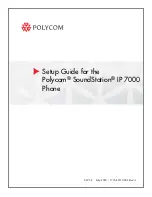
M e s s a g i n g
31
5. Messaging
Before you can receive or send messages or e-mail, you must have the
necessary settings and access points defined. Contact your service
provider for the settings.
■
Write and send messages
Your device supports the sending of text messages beyond the character limit for
a single message. Longer messages are sent as a series of two or more messages.
Your service provider may charge accordingly. Characters that use accents or
other marks, and characters from some language options, take up more space,
limiting the number of characters that can be sent in a single message.
The wireless network may limit the size of MMS messages. If the inserted picture
exceeds this limit, the device may make it smaller so that it can be sent by MMS.
Only devices that have compatible features can receive and display multimedia
messages. The appearance of a message may vary depending on the receiving
device.
1. Select >
Messaging
>
New message
and the message type. To
create a text message or multimedia message, select
Message
. The
message type changes automatically based on the content.
2. In the
To
field, enter the phone numbers or e-mail addresses of the
recipients, or to select recipients from
Addr. Book
, press the scroll
key. Separate recipients with a semicolon (;).
3. To enter the subject for a multimedia, or e-mail message, scroll down
to the
Subject
field. If the subject field is not visible for a multimedia
message, select
Options
>
Message header fields
, mark
Subject
, and
select
OK
.
4. Scroll down to the message field and enter the message content.
When you write a text message, the message length indicator shows
how many characters you can enter in the message. For example, 10
(2) means that you can still add 10 characters for the text to be sent
as a series of two text messages.
To insert an object, such as an image, video clip, note, or a business
card, to a multimedia, or e-mail message, press the scroll key, and
select
Insert
.
FCC Draft
Model: 6650d-1bH
21 February 2008
















































